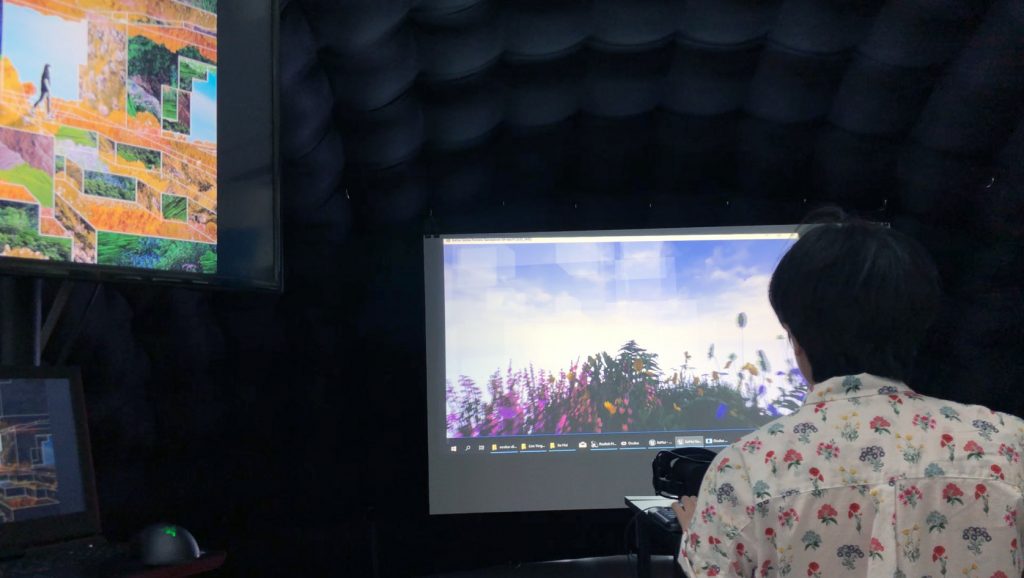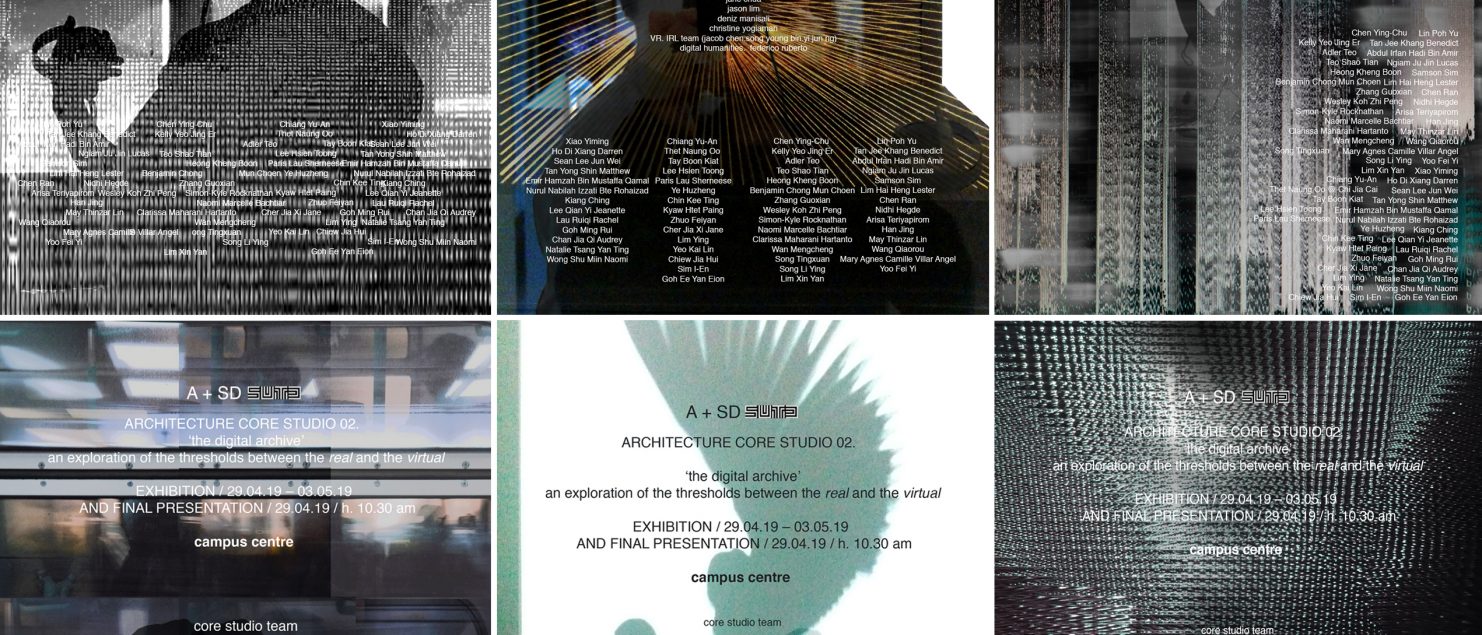Studio: “The Digital Archive”
Final Review and exhibition of “The Digital Archive”, Core Studio II at “SUTD”, Singapore University of Technology and Design. The studio explored the thresholds between the real and the virtual through the use of Virtual Reality, Federico Ruberto and Eva Castro designed the Studio’s brief, Eva was the studio coordinator and Federico curated the lecture series which connected design to philosophy exploring the field of “digital humanities”.
It has been a challenge this past term experimenting at SUTD (Singapore University of Technology and Design) by asking our young core-studio-II students to design the space of the “digital archive”; a spatial (virtual/physical, or both…) archive required to be set in “generic” albeit self-consistent world. The end of semester is approaching and on Monday 29th there’ll be the course final review. In the course the students were asked to “world-building” a micro environment (a space, virtual/physical, or both…, set in a fictional-generic surrounding) responding to the general brief that was set by Federico and Eva and from which we extract a passage:
“the students will be introduced to VR as means of production. VR is here taken not directly as a means of phenomenological representation, not only, but as a new tool through which design could challenge aprioristic notions of place, type and narrative; meaning, questioning the linear-accumulation of commodified experiences of spaces, in time. Within this hyperreal context the relationship between what we call ‘material’ and ‘digital’ will need to be readdressed and thus become the main driving core of the projects. As designers we must deal with a context in which experience is modeled and lived; as designers we must find a way to hold back the “real”, after its post-modern questioning”.
The students were directed by the general brief and by the four design tutors (Jane Chua, Jason Lim, Deniz Manisali, Christine Yogiaman) with their specific agenda, which we try to briefly synthesize hereafter:
1—archive of knowledge, constructing a digital library spatialized by a particular structure of knowledge. They were asked to think about the navigation of space in procedural terms, meaning a library that reveals itself according to the digital walks of its user(s);
2—archive of memory. What does it mean to create a digital altar for oneself or for a community? What does it mean to create a space inhabited by a voice? What is to design the space of smell?;
3—performative archive for participatory practices. The space of such archive was the stage of a theater in which actions and performances are recorded, reiterated whilst re-performed in time in order to create new forms of community;
4—digital-physical archives, an attempt at thinking space as a literary event, spatially writing by writing the archive, diagramming both its physical space and its virtual components.

